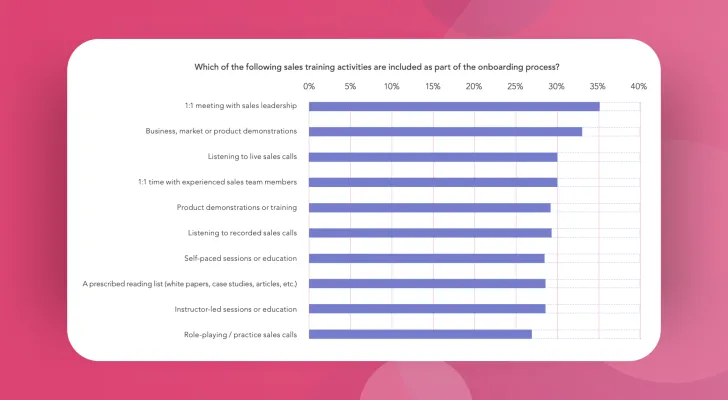Although there’s a greater need for sales coaching than ever before, it doesn’t mean it all rests on the sales leader’s shoulders. You don’t have to do it all yourself or figure out how to squeeze more coaching time into your already-packed schedule.
Instead, you can empower your team to engage in peer-to-peer coaching. Not only does peer-to-peer coaching alleviate some of the time demands placed upon team leaders, it also diversifies the sources of feedback for your reps and creates a culture where they can learn from each other.
So what exactly is peer-to-peer coaching, and how can you start putting it into practice for your organisation?
How does peer-to-peer coaching work?
The process of peer-to-peer (P2P) coaching is simple. All team members are great at what they do, but they’re all different. Each sales rep has a unique life, career history, strengths, and weaknesses. P2P coaching leverages the skills and knowledge across the team and shares it.
The steps in the peer coaching process include:
- Pairing reps up
- Each rep selecting and sharing a call recording with their coaching partner along with some context on why they selected the call. This context might include what they felt they did well and what part of the call they’d like help with.
- Listening to the shared call. Then scoring and documenting comments about key elements of the call as specified by the sales manager.
- Identifying a core strength or something that went very well on the call
- Identifying an area that requires improvement and suggesting how to improve it
- Conducting the peer coaching call with the partner to discuss observations noted when reviewing the call
But remember that peer coaching is not talking about deals or focusing on the results of the call. It’s about observing behaviours, celebrating what went well and identifying areas for improvement as well as how to improve during future calls.
Teach your team how to peer coach
Start teaching your team how to peer coach during team coaching sessions. Encourage team members to take turns selecting a call for the entire team to listen to in advance of team sessions. Have them make observations about designated key aspects of the call. Then have them single out one thing to celebrate that went really well during the call and one aspect that requires improvement.
When the team gets together, have the team member who selected the call introduce it, saying what they felt went well and where they feel they struggled. Then, have team members take turns contributing to this discussion.
The team member who selected the call will come away with positive feedback and one or two areas identified for improvement. Plus, they will have suggestions of how to increase their effectiveness of the aspect of the call they struggled with.
After doing team coaching in this manner, they’ll be able to coach one another regardless if the sales manager is present. That’s when to start peer-to-peer coaching on an ongoing basis, further increasing the amount of coaching and feedback they’ll be getting.
Coaching tips to share with the team
Some additional tips for your team to remember when peer coaching include:
Be curious, not frustrated – It’s easy to become frustrated by disagreeing with feedback given or something not being done correctly, but this is unproductive. Develop a curious nature instead, and seek to understand why the other person said or did something by asking questions. This is more fruitful when peer coaching.
Uncover positive coaching moments – It’s important to give praise in addition to sharing thoughts on ways for improvement.
Allow the other person to own their flaws (as much as possible) – We’re all human and are painfully aware when something goes wrong, so it is best to ask the coached person what they thought they did well and where they struggled prior to providing feedback.
Focus on identifying one game-changing aspect for improvement – There will be lots of feedback to share about each call and it’s good to touch on it all. But to really help the person being coached, the teammate needs to focus on one game-changing element for improvement. Then dig deeper into that one aspect and how to improve it during future calls.
Benefits of peer-to-peer coaching
The most obvious benefit of peer coaching is that it increases the total amount of coaching your team is receiving. This accelerates their progress and drives greater results. Additional benefits of P2P coaching include:
- Providing different perspectives on situations making it easier for reps to prepare for future calls and learn how to overcome more obstacles with ease
- Continuously gaining knowledge by tapping into the team’s knowledge.
- Seeing everyone on the team as a source of inspiration
- Increased teamwork and collaboration
- Greater accountability and receptivity to feedback
- Improved communication skills
- Greater ownership and empowerment around coaching and skills development
- Less pressure on sales leadership to provide all the coaching, freeing time for other activities
Interested in implementing peer-to-peer coaching on your team? Book a demo with a member of our team to see how Jiminny can help you increase the total amount of coaching across your team.





.webp)






